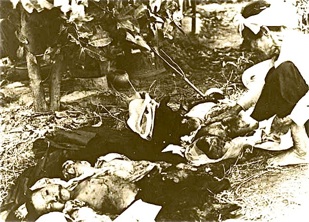Been There, Done That
Armchair quarterbacks are the best players in the stadium. Or so they believe even if they have never set foot on a football field.

That scenario comes to mind every time Senator Diane Feinstein is ranting on TV about the CIA torturing terrorists. If she has ever been in a cage with a terrorist with possible information about a threat against our country’s security, that has never been mentioned.
Defining torture or illegal actions should require a little experience in the field. I have been there and done that.
Just as some can remember where they were on December 7, 1941, and 9/11, I remember exactly where I was 49 years ago today. I was The Chief, International Law Division, for the Staff Judge Advocate (SJA), Military Assistance Command, Vietnam (MACV) sitting in a hot, humid office in the TAX building in the middle of Saigon shortly before midnight. Two officers from the J2 (Intelligence) and J3 (Operations) divisions of (MACV) had asked me to help prepare one page summaries for each of a dozen photos of atrocities occurring in Vietnam.

The pictures were of human heads on picket fences, impaled bodies, eviscerated corpses, etc. that had been found by the US military and South Vietnam Army (ARVN) personnel operating in South Vietnam against the Viet Cong Vietnamese guerrillas (the North Vietnamese Army was not yet actively engaged in the fighting).
The file of pictures and summaries was to be used by the Commander in Chief, MACV, for briefings in Washington about the enemy we were facing in Vietnam.
Several weeks later, the same officers asked me to draft a TWX (a classified message before the days of the internet) asking the Pentagon’s OK on taking a reprisal.
Reprisals are acts which are illegal if taken alone, but become legal when adopted by one state in retaliation for the commission of an earlier illegal act by the enemy. Under international law, the purpose of a reprisal must be to induce the enemy to comply with the law. It must be proportional to the act being reprised and it must be taken in a timely manner so that the enemy will know that it is in reprisal to its illegal act. The decision to resort to reprisals must be taken at the highest level of government.
I do not recall either the act being protested or the proposed reprisal. I do recall, however, that a second section was included in the TWX. Future illegal acts by the enemy were anticipated. In order to comply with the requirement for timeliness in response to those future crimes, advance approval was requested for some specific responses. We described about ten incidents that might occur and proposed specific reprisals for each.
Two weeks later, a response was received. It was a joint Department of Defense/Department of State TWX. The answer was no to both the request for the current reprisal and for advance approval of anticipated future crimes. Even if the answer had been an affirmative, it was too late to take a “timely” reprisal.
Much of my year with the MACV SJA was devoted to assisting J3 officers with drafting “rules of engagement” for American troops on both land operations and swift boat operations on the rivers. Time was also spent in coordinating with The Judge Advocate General of ARVN on complying with the laws of war.
Most of the latter dealt with the treatment of prisoners of war (POWs). Early on, most of the POWs were Viet Cong, who were not being treated as POWs by ARVN. As they were South Vietnamese citizens, ARVN was treating them as common criminals not protected by international law.
Our attempts to convince ARVN that because of the warlike circumstances under which they were operating, they should be treated as POWs were met with, “Look at what you did with interning Japanese/Americans and German/Americans during WWII.”
When the North Vietnamese Army began playing a major role in the war, we finally got ARVN to treat all its prisoners as POWs with protection under the Geneva Conventions on the treatment of prisoners. I was present at the opening of the first POW camp in South Vietnam and watched the first prisoners marched in.
The international laws of war at the time were antiquated. They were written for wars where organized and disciplined armies faced each other from trenches separated by “no man’s land.” WWII and Korea had some semblance to that type of war, but each succeeding conflict gets further and further away from the old definitions and have been modified by another principle of international law--custom.
Today, there is another law on the books. The United Nations Convention on Torture was signed by the U.S. on 18 April 1988 and ratified by the Senate on
21 October 1994.
This treaty prohibits “any act by which severe pain or suffering, whether physical or mental, is intentionally inflicted on a person for such purposes as obtaining from him or a third person, information or a confession….” That definition concluded with, “It does not include pain or suffering arising only from, inherent in, or incidental to lawful sanctions.”
There is no definition, explanation, or discussion of “lawful sanctions.”
So here’s the perspective.
My training and experience in the fields of international and military law would not cause a moments hesitation in blessing the interrogation techniques giving Senator Feinstein and others such heartburn. This is under both the antiquated Geneva Conventions and the new treaty on torture.
Maybe Feinstein and the others should spend some time in the fields of combat and interrogation cages.
You, the taxpayers, paid for my training. At your expense, I had a year of graduate studies in international relations at Georgetown University, Washington, D.C., and completed the course on international law at the Hague Academy of International Law., The Hague, Holland.
Hope you are not disappointed in the results. In any event, the pictures I am enjoying this Christmas Eve are much more pleasant than those I handled 49 years ago.
enough





